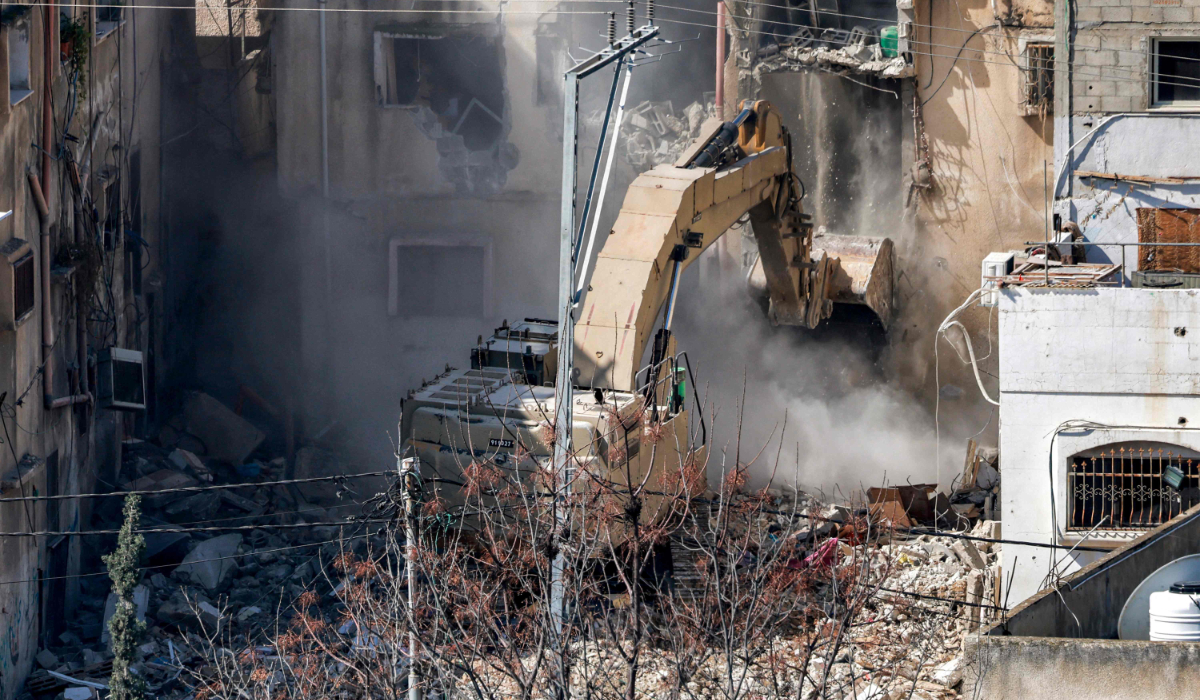JERUSALEM: Since the toppling of Syrian president Bashar al-Assad more than a week ago, Israel has sparked international condemnation with its moves in the Golan Heights, a strategic territory on the border with Syria.
Israel has occupied most of the Golan since 1967 and in 1981 annexed the area, in a move recognised only by the United States during President Donald Trump's first term.
Here is a look at the territory, its history, and significance:
The Golan Heights are a popular nature spot for Israelis. The plateau overlooks Lebanon and Jordan and offers sweeping views of Israel to the west and deep into Syria to the northeast.
The area is bordered by Mount Hermon, whose snowy peak rises to more than 2,800 metres, popular with skiers.
Israel conquered around two-thirds of the Golan during the 1967 Arab-Israeli war, and one month later established its first civilian settlement there, Merom Golan. Twelve additional communities were created by 1970.
Further fighting erupted during the 1973 Arab-Israeli war, with clashes continuing into the following year until Israel and Syria reached an agreement on an armistice line that for most of the past 50 years has remained peaceful.
As part of the deal, an 80 kilometre-long (50 mile) United Nations-patrolled buffer zone was created on the east of Israeli-occupied territory, separating it from the Syrian side and watched over by the multinational UN Disengagement and Observer Force. UNDOF's positions include a post atop Mount Hermon.
Syria retains control of the rest of the Golan east of the buffer zone.
In December 1981, Israel annexed the Golan territory it had occupied.
Today the Golan Heights are still sparsely settled but are home to an estimated 30,000 Jewish residents who live in more than 30 settlements, along with about 23,000 Druze.
The Druze, whose presence predates the Israeli occupation, are an Arab ethno-religious minority who also live in Lebanon, Jordan and Israel as well as Syria and the occupied Golan.
Many have not accepted Israeli nationality, and still identify as Syrian.
The Golan is also home to multiple Israeli military bases.
In 2019, during his first term in office, then-US president Donald Trump formally recognised Israeli sovereignty over the occupied Golan, making the United States the only country to do so.
The move prompted Israeli Prime Minister Benjamin Netanyahu in June of 2019 to announce the creation of a new settlement, Trump Heights, named after the US leader.
On Sunday, a week after Islamist-led rebels toppled Assad in a lightning offensive, the Israeli government approved a 40 million shekel ($11 million) plan to double the population of the Golan.
Netanyahu's office said the plan comes "in light of the war and the new front in Syria and the desire to double the population."
He said that strengthening the Golan was key to strengthening Israel, after declaring a week earlier that the Golan would remain in Israel's hands "for eternity".
"We have no interest in confronting Syria. Israel's policy toward Syria will be determined by the evolving reality on the ground," Netanyahu said in a separate video statement.
Israel has previously announced plans to increase the number of settlers in the Golan, with the government of then-premier Naftali Bennett approving a $317 million, five-year programme to double the settler population in December 2021.
At the time, the Israeli population in the occupied Golan Heights was around 25,000.
Germany was among those opposing the new plan.
A foreign ministry spokesman in Berlin said "it is perfectly clear under international law that this area controlled by Israel belongs to Syria and that Israel is therefore an occupying power".
Riyadh's foreign ministry expressed "condemnation and denunciation" of the plan, which it called part of "continued sabotage of opportunities to restore security and stability in Syria" after Assad's overthrow.
Days earlier, while Assad's rule was collapsing in Syria, Netanyahu ordered troops into the buffer zone, saying it was a temporary and defensive measure in light of the "vacuum on Israel's border and in the buffer zone".
On Friday, Israeli Defence Minister Israel Katz ordered troops to "prepare to remain" in the buffer for the winter.
Foreign Minister Gideon Saar and an Israeli government spokesman both confirmed that Israeli troops had also moved beyond the demarcated buffer zone.
Israel's move into the buffer zone was also widely condemned.
A UN spokesman called it a violation of the 1974 disengagement agreement.
A Turkish foreign ministry statement said Israel had moved into the buffer zone at a sensitive time for Syria.
"When the possibility of achieving the peace and stability the Syrian people have desired for many years has emerged, Israel is once again displaying its occupying mentality," the statement said.


























